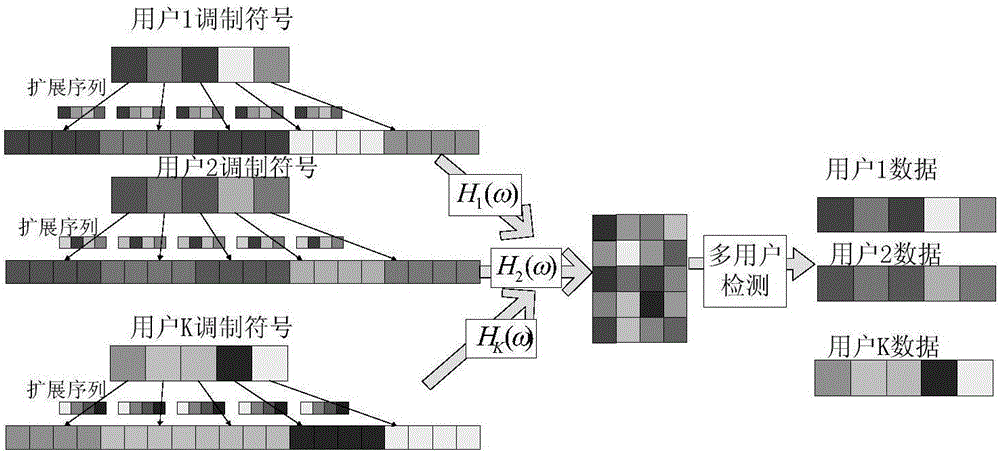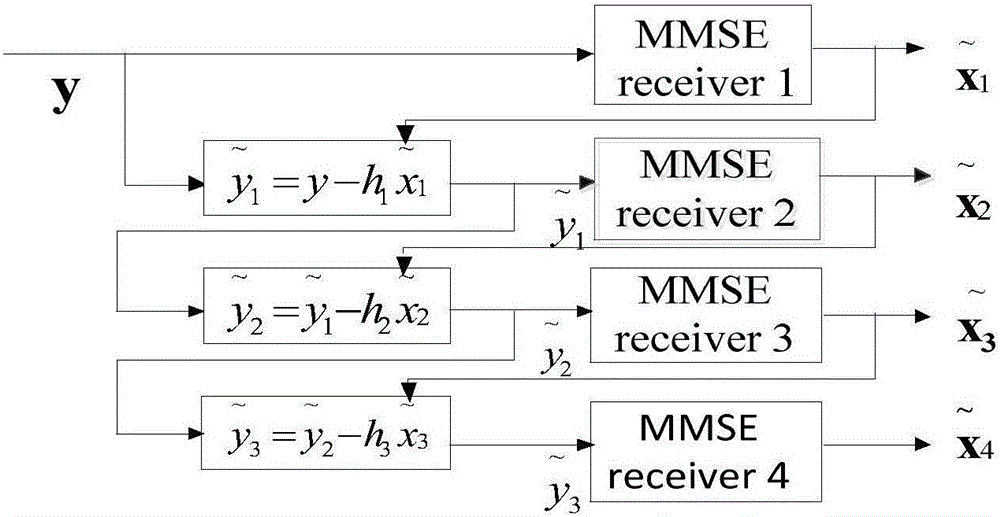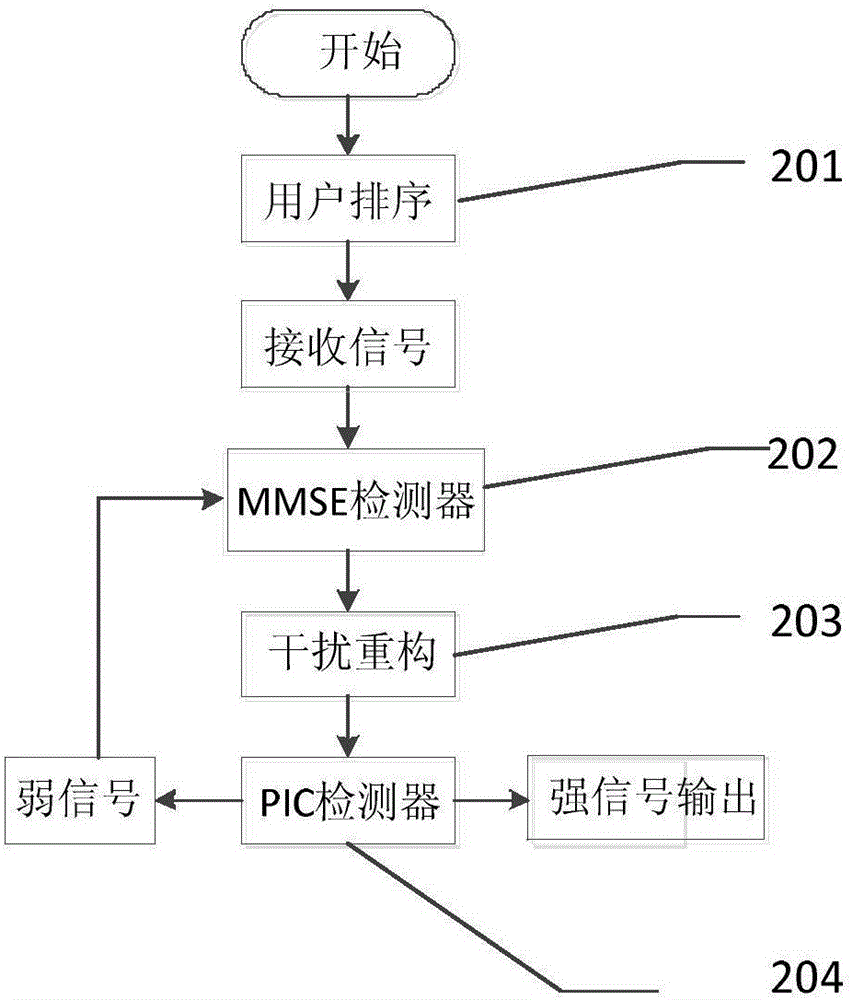MUSA system multistage portion parallel interference elimination multi-user detection method
A multi-user detection and interference cancellation technology, which is applied in the field of multi-level partial parallel interference cancellation multi-user detection of MUSA system, can solve the problems that cannot meet 5G mass connections, high spectral efficiency, and low general spectral efficiency of orthogonal multiple access access. , to improve performance and complexity, and reduce complexity
- Summary
- Abstract
- Description
- Claims
- Application Information
AI Technical Summary
Problems solved by technology
Method used
Image
Examples
Embodiment Construction
[0029] The preferred embodiments of the present invention will be described in detail below with reference to the accompanying drawings.
[0030] figure 1 Shown is the uplink schematic diagram of the MUSA system. First, K access users spread their modulation symbols by using complex domain multivariate sequences with low cross-correlation as spreading sequences, then, the extended symbols of K users are sent in the same time-frequency resource, and finally, at the receiving end , use the corresponding detection method to demodulate and recover the information of each user. The received signal after passing through the channel can be expressed as:
[0031] y = Σ k = 1 K h k s k x k + n
[0032] Among ...
PUM
 Login to View More
Login to View More Abstract
Description
Claims
Application Information
 Login to View More
Login to View More - R&D
- Intellectual Property
- Life Sciences
- Materials
- Tech Scout
- Unparalleled Data Quality
- Higher Quality Content
- 60% Fewer Hallucinations
Browse by: Latest US Patents, China's latest patents, Technical Efficacy Thesaurus, Application Domain, Technology Topic, Popular Technical Reports.
© 2025 PatSnap. All rights reserved.Legal|Privacy policy|Modern Slavery Act Transparency Statement|Sitemap|About US| Contact US: help@patsnap.com



